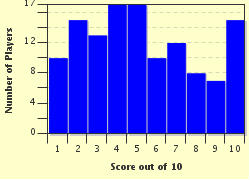Quiz Answer Key and Fun Facts
1. The first contenders in our game of 'duck, duck, duck, goose' waddle into the arena. The real goose among them is quite rare. It is a migratory bird, regularly travelling between its winter territory in eastern China and its summer breeding grounds in south-east Russia, northern China and Mongolia. Can you spot it from the list below, given that it isn't exactly a master of disguise?
2. The next four birds to strut their stuff in the competition all have distinctive head feathers, but again only one of them is a goose! Which description forms part of the common name of Anser indicus, known for its ability to fly at high altitudes?
3. Round three of our competition, and Branta leucopsis is hiding alongside three ducks. One of the ducks has a name derived from the region around the capital city of Russia; a second is named after a description of its plumage; and the third's name derives from the Italian word 'garganello'. Using these clues to the names of the imposters, can you identify the word that appears in the common name of the goose?
4. Next up into the arena is a group of well-travelled birds, judging by the listed world locations in their names. The goose shares its name with the country with the longest coastline in the world. Can you spot it in the list below?
5. The blue goose appearing in this next line-up is easy to identify as it has forgotten to take off its name badge! However, it is more commonly known by what name?
6. The next set of four birds regally stride out to be judged. They all have names associated with wealth or royalty, but only the goose shares its name with a living species of penguin. Can you pick their shared name out of the list below?
7. Another four birds with descriptive names enter the arena in the hope of confusing some poor quiz takers about the identity of the goose amongst them. However, Branta hutchinsii is having a laugh if it thinks it could be mistaken for one of the ducks accompanying it. Branta hutchinsii's common name, ________ goose, can be completed by which adjective?
8. One of the rarest geese in the world is taking part in this next line-up, although if you're from the fiftieth state to join the United States of America then this bird should be especially easy to identify. Which of the following options, a US state bird, is our hidden goose?
9. The game continues with an attempt to identify Anser brachyrhynchus, a European goose with pinkish-brown feathers and a particularly high-pitched 'honk'! It also has a distinctive feature which is reflected in its common name. What description completes the name of the ________ Goose, a common sight in Great Britain, Denmark and the Netherlands?
10. The final line-up of waterfowl wearily troop in for inspection. Among them is a goose that is usually found living in the western US; it breeds in the summer in Alaska and winters (very sensibly) in the warmer climes of California. What is its name?
Source: Author
Fifiona81
This quiz was reviewed by FunTrivia editor
Tizzabelle before going online.
Any errors found in FunTrivia content are routinely corrected through our feedback system.

